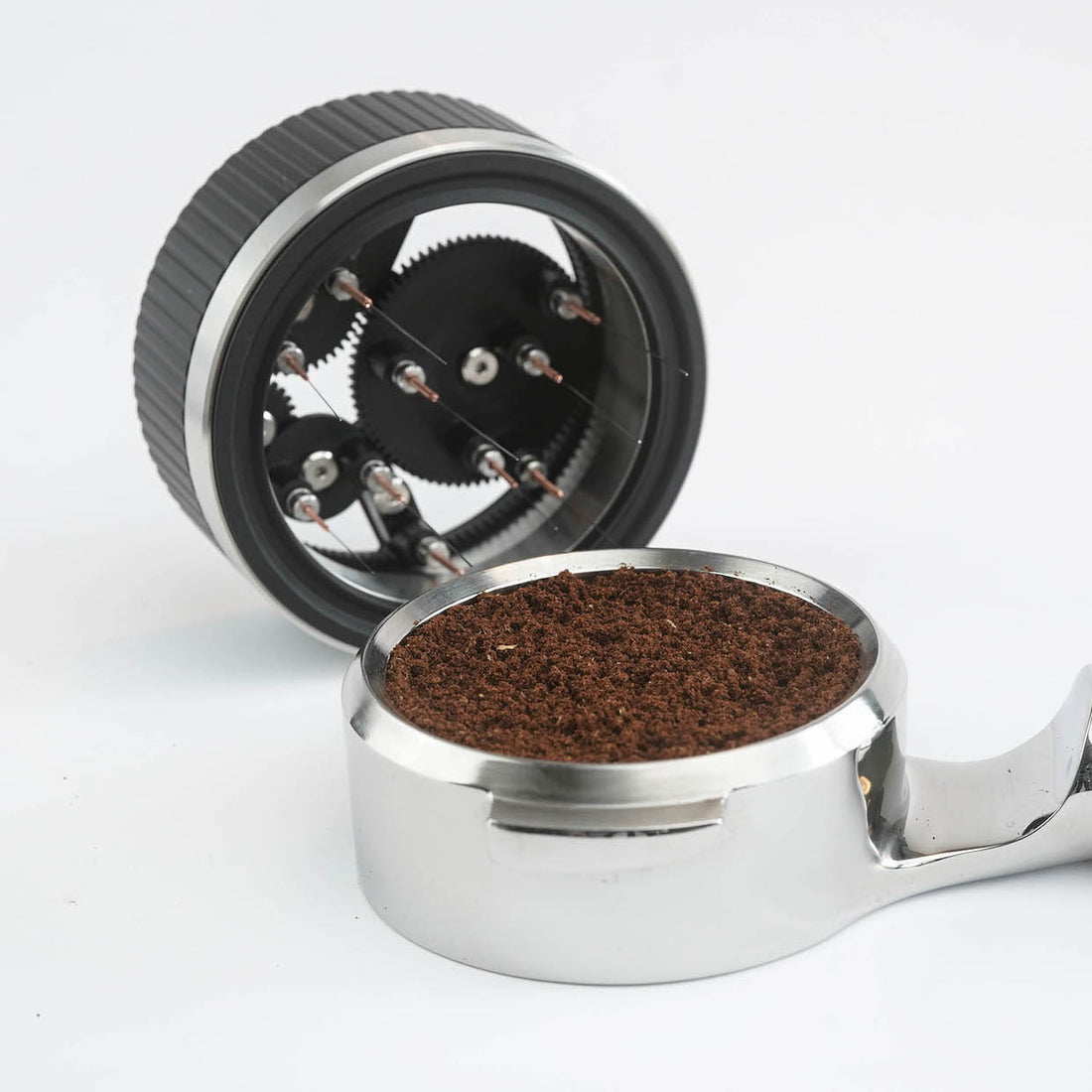In the nuanced realm of espresso, perfection is a journey. Every step, from selecting beans to extraction, is a delicate ballet that, when executed precisely, results in a symphony of flavors in your cup. Among the myriad techniques aficionados employ to perfect their brew, one has emerged as both controversial and transformative: the Weiss Distribution Technique (WDT). This comprehensive guide will unravel the threads of WDT, taking you through its history, purpose, and application in the quest for the ultimate espresso.
The Genesis of WDT: The story of WDT begins with John Weiss, a member of the online coffee community, alt.coffee. Dissatisfied with inconsistent extractions, Weiss pioneered a straightforward yet ingenious approach to improve his brew's quality in the early 2000s. He introduced a method of manually agitating coffee grounds using a needle, ensuring an even distribution and density before tamping. This seemingly inconsequential step was a ripple that created waves in the coffee world, establishing WDT as a critical element of modern espresso brewing.
Example of clumps

Before and after WDT

Understanding the Need for WDT: Before delving into the technique itself, it's vital to understand the problem it solves. Grinders, even high-end models, often produce coffee grounds clumped together due to static electricity and moisture. These clumps can wreak havoc during water passage in the espresso extraction process, leading to channeling, where water finds the path of least resistance. This uneven extraction results in bitter, over-extracted flavors from some areas and sour, under-extracted tastes from others. WDT addresses this by eliminating clumps and ensuring uniform distribution, facilitating balanced extraction.
Tools of the Trade: Initially, Weiss and other enthusiasts used makeshift tools like dissection needles, paper clips, or toothpicks. As WDT gained popularity, it spurred a new niche within coffee accessories, with tools designed explicitly for the technique. These tools feature thin wires or needles that delicately manipulate coffee grounds without compacting them, offering precision that makeshift tools can't match.
The WDT Step-by-Step: Implementing WDT doesn't require professional barista skills, but it does demand care. Here's how you can incorporate it into your espresso routine:
-
Grinding: Begin with freshly ground coffee, ideally using a burr grinder for consistency. The grind size should correspond to your espresso machine's demands and your flavor preferences.
-
Distribution: Transfer the grounds to your portafilter. Insert the needles of your WDT tool gently into the grounds, not to compact them, but to agitate and break up clumps. Carefully stir with a lifting motion to aerate and evenly distribute the coffee.
-
Leveling: After redistribution, level the grounds. Tools like distribution combs or levelers can help create a flat, even surface, but skilled hands and a gentle shake can also achieve good results.
-
Tamping: Apply a consistent and leveled force using a tamper. This step compacts the coffee into an even puck, ready for optimal water passage. The goal is uniform resistance against the water pressure during extraction.
-
Extraction: With your espresso machine preheated, start the extraction. A balanced shot should take approximately 25-30 seconds to brew. Observe the flow; it should be steady and result in a rich, even crema.
Fine-Tuning Your Technique: WDT isn't a one-size-fits-all solution. It requires experimentation and adjustment. Variables like the coffee bean type, humidity, grind size, and water quality all play into the espresso's final flavor. Don't hesitate to adjust and refine your approach, documenting changes, and results to understand what works best for your setup.
The Science Behind the Technique: At its core, WDT enhances the physics of espresso brewing. By fostering a uniform coffee bed, the technique promotes even water distribution, essential for optimal extraction. It mitigates the risk of channeling, where water bypasses coffee grounds, leading to taste imbalances. Scientifically, it's a matter of fluid dynamics and resistance, ensuring that water travels through all coffee particles at a uniform rate, extracting flavors comprehensively.
WDT in Professional Barista Circles: While some home enthusiasts might find WDT excessive, it's a staple in professional settings. Baristas worldwide employ WDT or variations of it to ensure each espresso shot maintains the highest quality standards, reflecting the intricate flavors of the beans. In competitions, such precision can be the dividing line between a winning espresso and a missed opportunity.
Controversies and Misconceptions: Despite its benefits, WDT isn't without its detractors. Some argue the technique is unnecessary, overly complicated, or yields negligible improvements, especially with advancements in grinder technology. However, for many, the proof is in the cup. While WDT may not revolutionize every extraction, it contributes to consistency, the cornerstone of any culinary art.
Investing in WDT Tools: As WDT gains traction, specialized tools have emerged, ranging from basic needle sets to advanced devices. Investing in a quality WDT tool can be a game-changer, offering ease, consistency, and precision. While it's possible to start with DIY alternatives, dedicated tools streamline the process, making it more enjoyable and effective.

